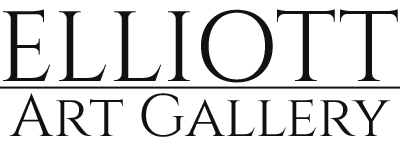THEO TOBIASSE
Theo Tobiasse, master of the Paris School, was born in Jaffa, Israel in 1927 of Lithuanian parents. His father, a Zionist, was a printer and in order to find work, he moved the family to Paris in 1931. Tobiasse has never forgotten his first sight of Paris, the City of Light. During the Nazi occupation of Paris, the Tobiasse family lived hidden for two years in a minuscule apartment in Paris. From July 1942 through August 1944, the family never ventured outside, nor would they turn on the lights or burn candles. By the feeble light that filtered through the closed shutters, Theo spent his time reading, drawing, and playing chess with his father. The chessboard pattern seen in many of Theo’s paintings is symbolic of this time in his life. He attributes his works to his real life experiences. He believes that because of these experiences, he has reached a place of perfect contentment and harmony. This is apparent in his works through the use of colors and textures.
The only indication of time passing was the sound of Nazi boots in the streets and on the staircase of their house – more than once they were very close to being discovered. On August 25, 1944 Paris was liberated, and Theo walked out of the apartment with a large portfolio of drawings into the light of a cloudy day.
After the war Tobiasse worked for 15 years as a very successful advertising artist, first in Paris and then in Nice. He painted as often as he could during this time, often at night. In 1960 he entered his first art show and won the Grand Prize. Since 1961, Tobiasse has enjoyed incredible worldwide success.
In 1976 he moved his studio to St. Paul-de-Vence where he rediscovered both the sky of Jerusalem and that of Florence. It was in Nice, the city he had adopted upon leaving Paris, that his pictorial expression came into its own. Initially profane and close to certain bestiaries, his subjects rapidly evolved towards reminiscences about his childhood: buses that he had caught sight of on his journey to France, boats with wheels, tea kettles, the warmth of the fireside, the trains when he arrived in Paris at dawn, the smokiness of railway stations, etc. All of these symbols were combined, with Biblical or erotic fantasies and also with the theme of exile, which had become his main interest over the previous few years. Often visible in his more recent work, the theme of exile took on a more dramatic dimension when it began to encompass not only past and present exiles, but the fear of exiles still to come. This background subject, currently his main preoccupation, is woven out of women, children, crowds, but also candelabra, which represent the glow of hope. Since 1980, Theo Tobiasse has travelled a great deal in the United States. Fascinated by New York, he decided to find a place where he could work for several months every year.
This allowed him to work more closely with his friends and dealers, Kenneth and Sherri Nahan. Many exhibitions and one-man shows have been held throughout the world, providing milestones for his work that is to be found in the catalogues of many International Museums. Theo Tobiasse has created monumental works such as the fountain entitled “L’Enfant Fou” for the Arenas Business Centre at Nice Airport, and stained-glass windows for various institutions in Strasbourg and Nice. He also designed costumes and state-set models for Bernard Shaw’s “Pygmalion”. He has filled many sketchbooks, some of which have been published, and created illustrated works for lovers of fine books, plus etchings and engravings. Theo Tobiasse also discovered a passion for ceramics, producing pottery and dishes, as well as a series of small bronze sculptures. Several monographs have been published on Theo Tobiasse’s work.
His works have been on exhibition throughout the western world and Japan. Tobiasse has also worked in etching, lithography and many more mediums. He is one of the rare artists who truly create original graphics making his own plates and closely supervising all aspects of the printing process.
A sentimental and private individual, Tobiasse puts his innermost feelings into all of his works and his little “secret” into his original paintings: a personal message which he writes in Yiddish and then glues onto the canvas before painting or collaging over it. No one will ever know the message without destroying the painting itself!
Public Works
Tobiasse joined the illustrious list of Twentieth Century artists who have decorated chapels in the South of France: Picasso in Valauris, Matisse in Vence, Jean Cocteau in Villefranche-su-Mer with his glorious decoration of the chapel St-Sauveur in Le Cannet, which includes painted panels, a mosaic, sculptures and stained glass windows.
As part of the celebration of the two-thousandth anniversary of the Jewish community of Strasbourg, France, Tobiasse created stained glass windows and murals for the community center which now bears his name
Partial List Exhibitions & Museums
Nahan Galleries -New York, Tokyo and New Orleans
Biblioteque Nationale – Paris
Grand Palaise – Paris
Musee de L’athenee – Geneva
Hotel de ville, Nancy
Galerie Chave – St. Paul
Waddington Galleries, London
Simon Wiesenthal Center, Los Angeles
International Art Fair, Basel
Salon d’art Francais, Tokyo
Petit-Palais, Geneval
Want to be the first to know which artist is featured in our weekly sale? Sign up below!
Discounts range from 10-30% and include FREE SHIPPING!
